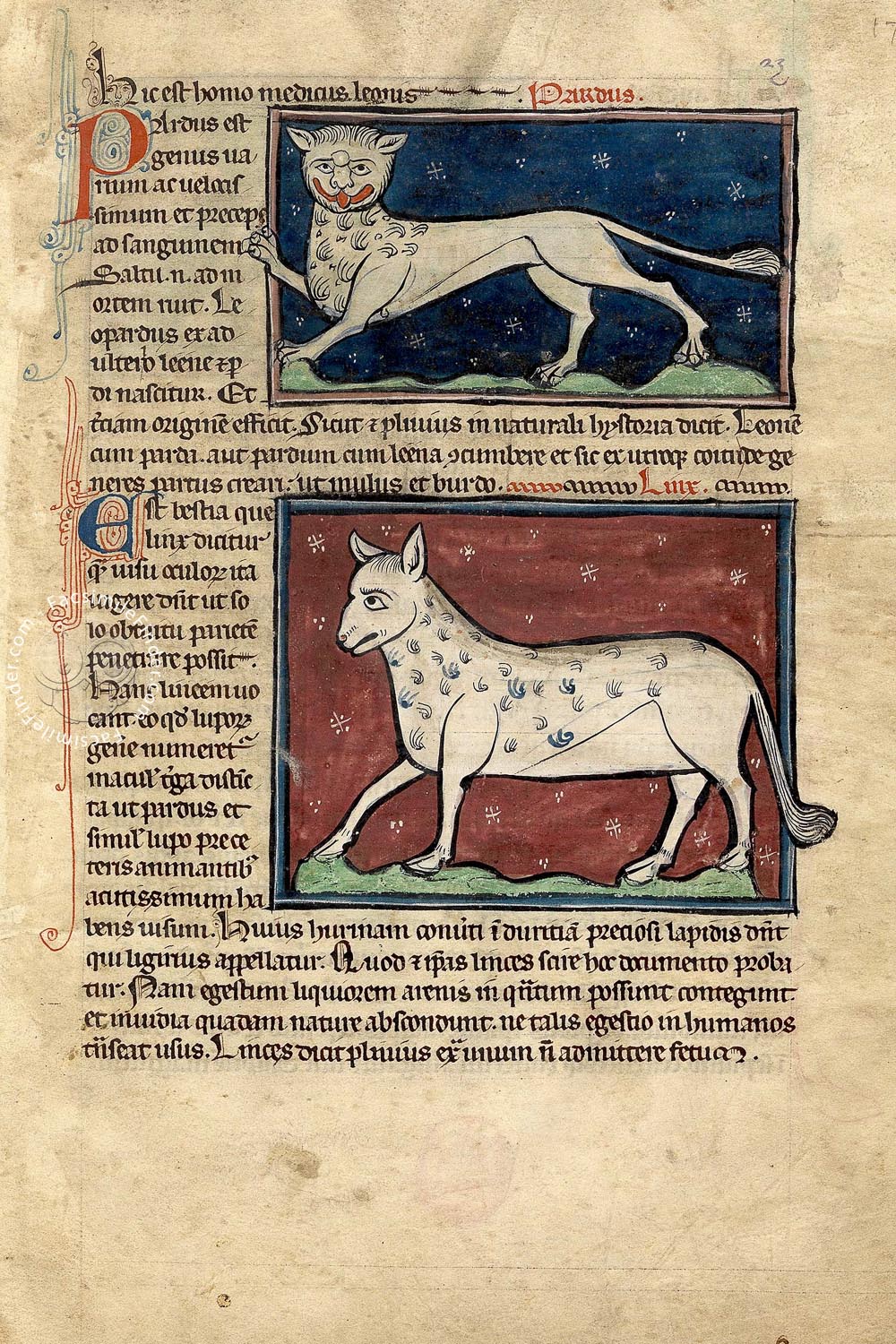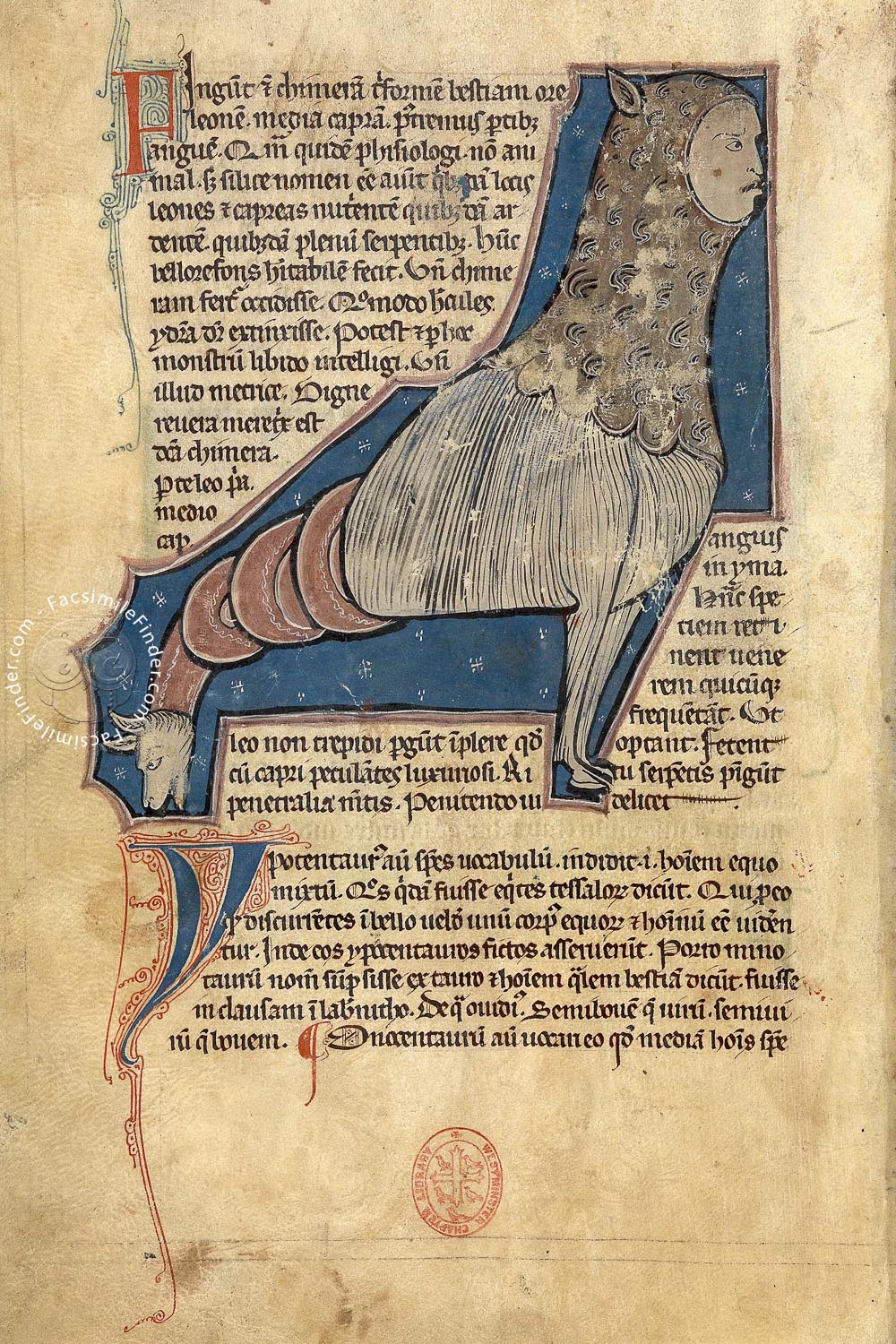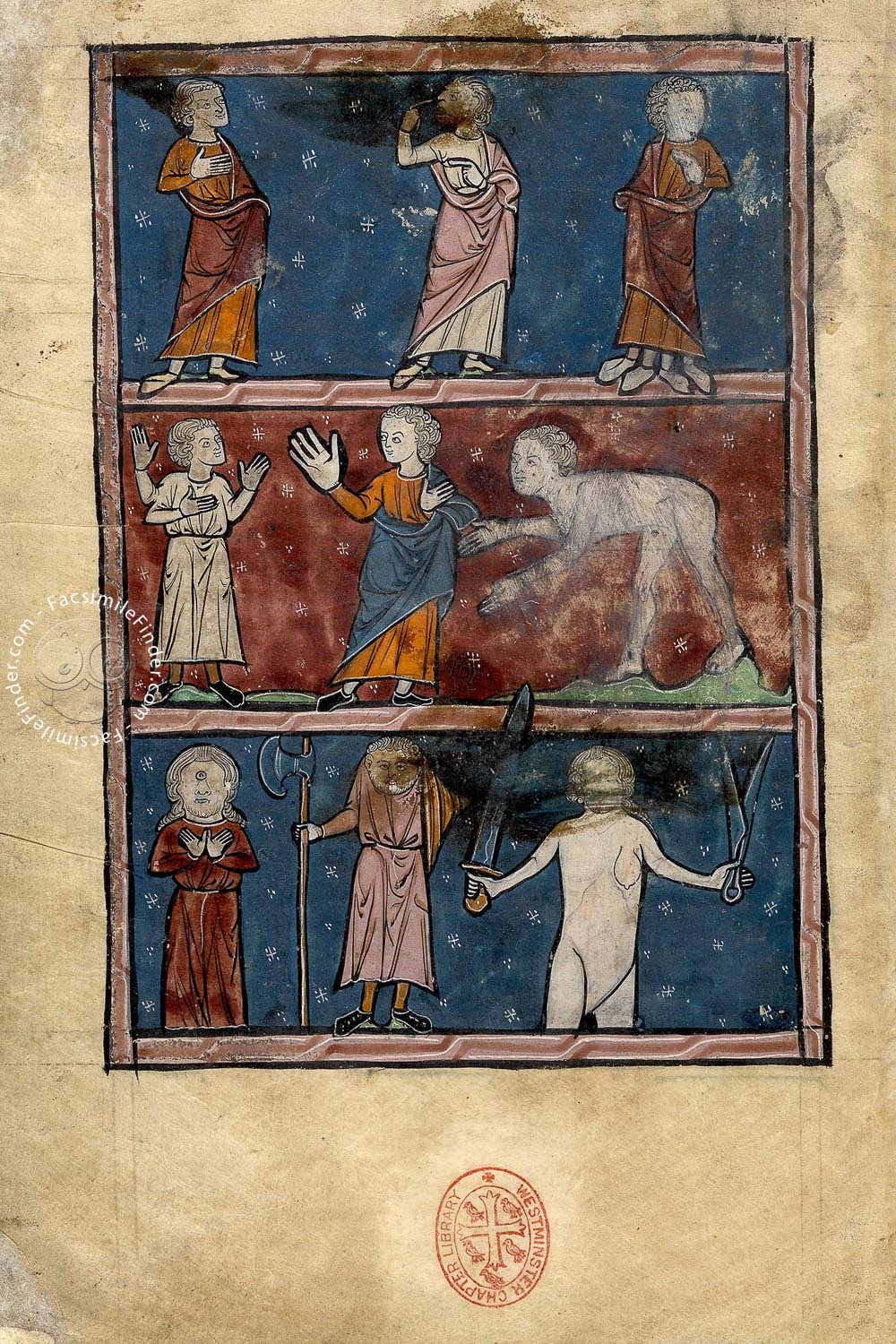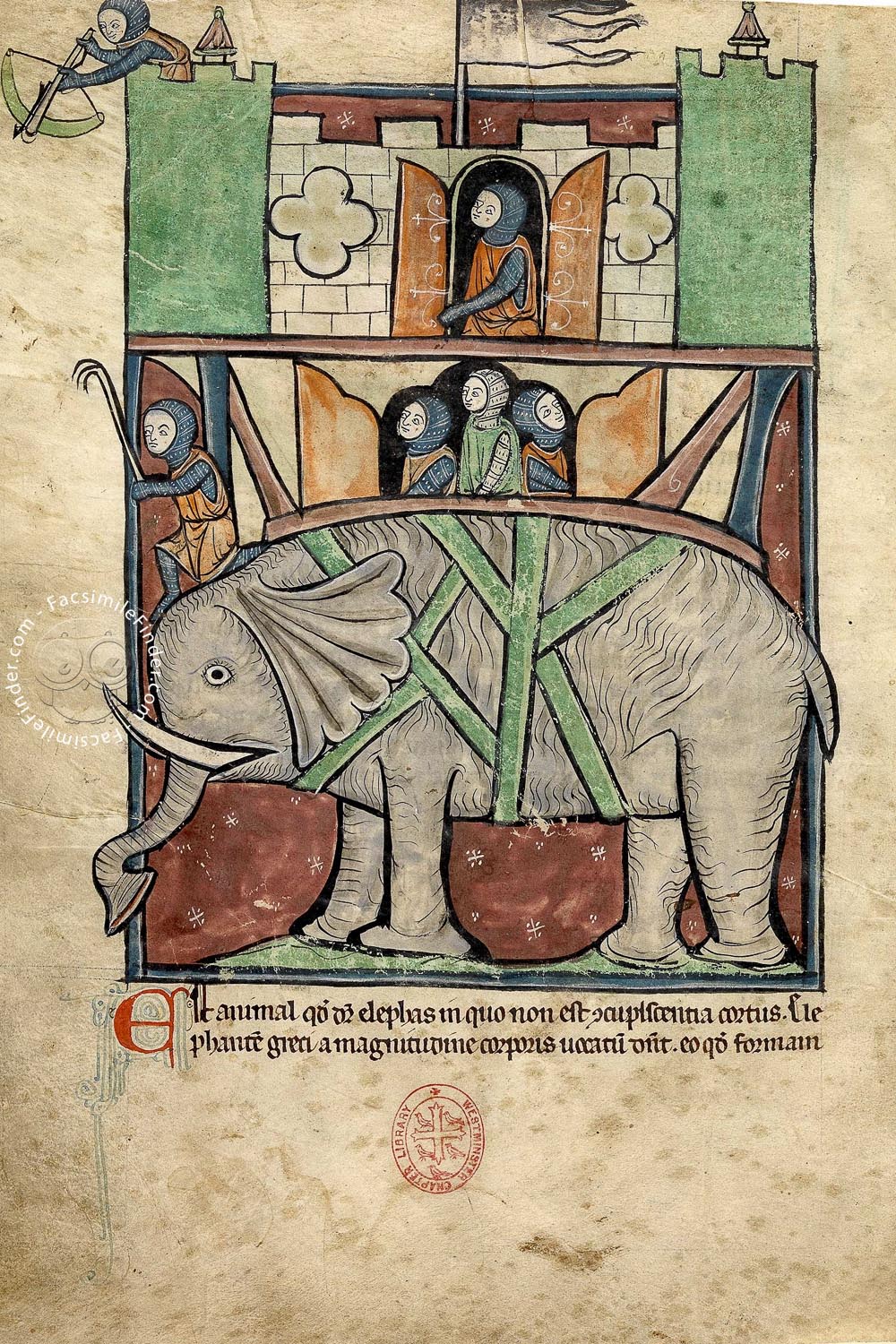Altough tremendously distinct from all other bestiaries, the five manuscripts of the Third Family (England; 13th century) have received much less scholarly attention than the bestiaries of other families. Ilya Dines discusses their features and origin.
The Physiologus, origin of all bestiaries
The influential literary genre of the medieval Bestiary has a variety of incarnations, but all of the manuscripts in this tradition have their roots in the text entitled the Physiologus.
The Physiologus was designed to employ the characteristics of animals and other creatures to guide Christians with moral lessons throughout their lives.
The Physiologus (The Naturalist) was written in Greek by an anonymous author, probably in Alexandria in the 3rd century A.D. Its text comprises chapters on various real and mythological animals and birds, reptiles, and magic stones. The sources of this compilation were various works pre-Christian and Church authors, the Bible, and fables.

The text of the chapter includes quotations from the Bible combined with zoological and pseudo-zoological characteristics of the animal, and also a moralisation explaining the animal’s characteristics in light of Christian doctrine. The Physiologus was designed to employ the characteristics of animals and other creatures to guide Christians with moral lessons throughout their lives.
Starting with the 12th century, the development of bestiaries took place almost entirely in England.
Apparently the Physiologus achieved its aim, as it quickly became a very popular book, presumably among those less educated, as evident in its rapid translation into various languages. By the 4th or 5th century the Physiologus was translated into Latin and toward the 9th and 10th centuries it had spread throughout Western Europe.

By the 12th century the Physiologus had reached England, and from this period on the development of the bestiary tradition took place almost entirely in that country. The tradition of these manuscripts was first described by the prominent English scholar Montague Rhodes James, who in 1928 divided all illustrated bestiaries known to him into four groups or “families” according to their texts.
As result we currently possess about seventy manuscripts of so-called BIs, H, Second, Transitional, Third and Fourth Families.
The bestiaries of the Third Family
The five bestiaries of the Third Family, all of them of English origin dating back to the 13th century, have received much less scholarly attention than the bestiaries of other families despite the fact that these manuscripts differ tremendously from all other bestiaries.
Their structural difference is most striking. They start with the Isidorean text beginning Cum voluntas condito accompanied by pictures of Fabulous Nations, and after that proceed to Adam naming the animals, and then to the domestic animals. This section is followed by chapters on the wild beasts, birds, fish, snakes and insects.
The bestiaries of the Third Family have unparalleled and so far untraced moralisations.
The bestiaries end with chapters on fabulous monsters. The manuscripts contain absolutely different additional texts that appear at the end: Rota Fortunae, extracts from Pseudo-Seneca’s De Remediis Fortuitorum, De Septem Mirabilibus Mundi, and extracts from the Policraticus, a twelfth century text written by John of Salisbury.

In addition to the irregular structure, the bestiaries of the Third Family have unparalleled and so far untraced moralisations, whose source for many years was considered the unedited encyclopedia entitled the Pantheologus written at the end of the twelfth century by Peter of Cornwall, an obscure Augustinian canon at Holy Trinity, Aldgate in London.
The Westminster Bestiary, unparalleled beauty among the Third Family
The Westminster Bestiary stands out even within this anomalous family of manuscripts, in its structure (which has its own textual and structural peculiaries), and even more in its iconography, probably the most beautifully decorated of all known bestiaries.
Description of the manuscript
- Thin yellowish vellum
- 223 x 163 mm
- i-ii paper flyleaves contemporary to the binding
- 64 fols.
- iii-iv paper flyleaves
- Text area: 160 x 120 mm, 2 columns
- 33 lines, set below top line
- Textura, in dark brown ink written by the same scribe throughout the manuscript
Decoration
164 mostly framed pink-red and deep blue full-color miniatures set alternately against deep blue and pink-red backgrounds, decorated with white patterns of snow-flakes, 3 dots, and crosses with dots in their angles, executed by a single very capable artist throughout the manuscript.
Two full page miniatures (ff. 1v and 3r); several others of ½ or ¾ pages; 2-5 lines red and blue initials with alternatively blue and red penwork; red and blue paragraph signs. Red rubrics (some in French).
Style
The style of this very beautiful Third Family bestiary is characterized by open spaces between solid stiff figures, often with schematic draperies, made by crisp lines and distinctive oval facial shapes, broad protuberant foreheads, and pointed chins that altogether give a feeling of rigidity and even immobility to the composition of many scenes.
Content of the scholarly text
My commentary volume will contain the full transcript of the text, and an introduction dealing with an early history of the Physiologus, its development into the bestiary, the bestiary tradition in England, preliminary information about Third Family manuscripts, and codicology and paleography of the Westminster Bestiary.
It will also include a discussion of authorship, audience, methods of compilation, sources of the Westminster text and images, and a comparison with the texts and images of other manuscripts.
The Westminster Abbey Library is the repository for the Westminster Bestiary, under the shelf mark MS. 22
Siloé, arte y Bibliofilia is the publisher of the fine facsimile edition.


